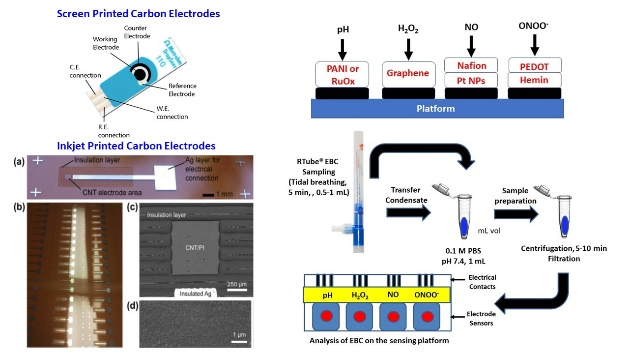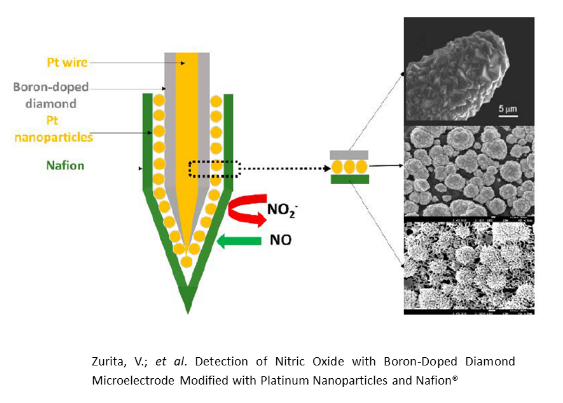Greg M. Swain

Research
Electrochemistry, Carbon Material Science, Corrosion and Neuroanalytical Chemistry
(Research Description PDF)
Research in our group is interdisciplinary and spans several fields: physical and analytical electrochemistry, carbon material science, point-of-care medical diagnostics, neuroanalytical chemistry, and corrosion of additively manufactured metal alloys. We conduct fundamental research to address key problems and technological needs in health and the environment. Our core science lies in the preparation, processing and application of multiple carbon materials including conducting diamond films and powders, nitrogenincorporated tetrahedral amorphous carbon films, and screen- and inkjet-printed carbons.

Electrochemical Reaction Kinetics and Mechanisms – Factors controlling electrontransfer kinetics and mechanisms of soluble redox systems at boron-doped diamond and nitrogen-incorporated tetrahedral amorphous carbon thin-film electrodes are being investigated in aqueous, organic, and ionic liquid electrolytes. We seek to learn how factors such as the surface chemistry, electrode microstructure and doping level affect electrochemical reaction rate constants and mechanisms.

– The use of an electrochemical sensing platform for multiple potentially relevant biomarkers in collected exhaled breath condensate is a new paradigm in respiratory disease treatment and management. Modified screen- and inkjetprinted carbon electrodes are being used in diagnostic technology for the monitoring and care of patients with lung cancer, pneumonitis, COPD, obliterative bronchiolitis, cystic fibrosis, and general respiratory tract infections, which all are characterized by oxidative and nitrosative stress. Key inflammatory markers targeted are pH, hydrogen peroxide, nitric oxide, and peroxynitrite.
We are also working on similar diagnostic technology for electrochemically monitoring biomarkers of wound healing and infection.

– In vitro electrochemical methods, immunohistochemistry and other analytical tools are being used in collaborative research to better understand how potential changes in neuromuscular signaling in the gastrointestinal tract are associated with pathological conditions in animal models of obesity and neurodegenerative disease. Molecules, such as serotonin, nitric oxide, ATP and acetylcholine, are being detected with diamond microelectrodes and microelectrode sensors.

Additively Manufactured Metal Alloys and Coating Systems for Corrosion Control – Additive manufacturing (AM), or 3D printing, is the process of fabricating objects layer-by-layer, as opposed to traditional subtractive manufacturing technologies. We seek to understand how the surface texture, alloy microstructure and elemental composition affect the electrochemical behavior of AM aluminum, steel, and titanium alloys prepared by laser powder-based sintering and fused filament fabrication methods. It is also of interest to learn how surface pretreatments and coating systems mitigate corrosion on these alloys. Electrochemical methods, various microscopies and surface science tools are routinely used in these studies.